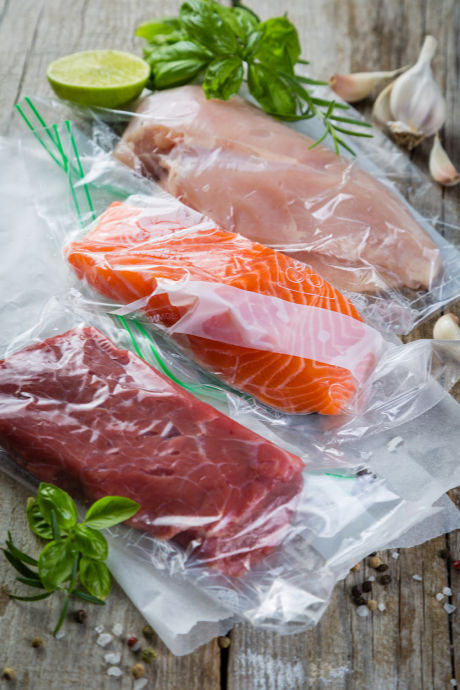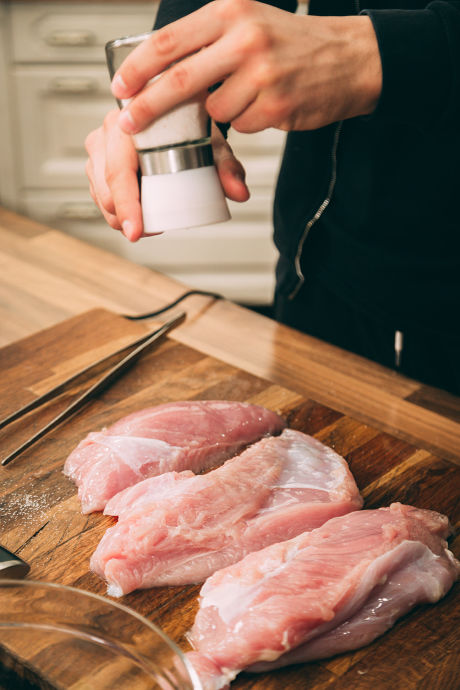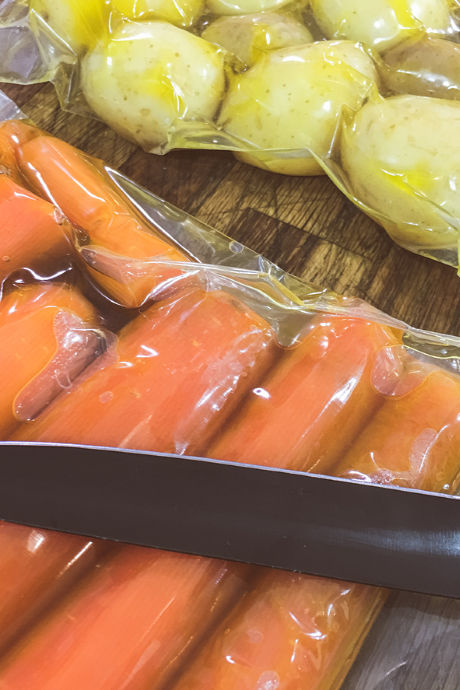7 Reasons to Try Sous Vide Cooking
Posted by Julie on Dec 6th 2018
We can’t help being curious about all the latest and greatest appliances and gadgets. After all, it’s our job to keep up with culinary trends and kitchen advances. We’ve seen our share of unitaskers, and our share of products that do everything but the dishes.
One relatively new innovation that’s caught our attention is sous vide. While this cooking method began in France in the 1960’s, it’s become more popular in home kitchens over the past decade. If you’ve been curious about sous vide too, keep reading to find out why it’s worth trying.
Reason #1: Sous Vide Is Easier Than You Think
People can be wary of sous vide because it sounds intimidating. But if you can get past the fancy French name (which translates to “under vacuum” and is pronounced "soo veed"), sous vide is surprisingly simple.
Yes, it does require some specialized equipment. The equipment is necessary to ensure your water bath is held at a constant temperature to cook food thoroughly and evenly. While you can give this method a test run as described on ChefSteps we don’t recommend cooking sous vide in this manner on a regular basis. We’ll explain why in the next section.
Reason #2: Set It and Forget It
Once you have sealed your food in bags, placed them in the water bath, and set the temperature according to what you’re cooking, you can go about your business. This is why it's most convenient to use specialized sous vide equipment to monitor and maintain the water temperature.
While some foods are more time-sensitive than others, in many cases you can leave your meat, poultry, or vegetables simmering away until you’re ready for the next step. Sous vide cooking times are relatively flexible; with this method, you aren’t bound by a timer.
Reason #3: Perfectly Predictable Results
Unless you are a professional chef, it’s tough to gauge doneness of a piece of beef, especially using dry cooking methods like searing. Sous vide can make you even better than a professional chef, because you only have to set the temperature in order to obtain the results you want.

On Serious Eats, they explain in greater detail how water bath temperature correlates to internal temperature and doneness of your food. Set your water temperature to 130F, and your steak will be medium rare when it’s finished. It will not go from medium rare to medium or medium well, as long as the temperature of the water doesn’t increase.
Reason #4: No Fat Needed
When you cook sous vide, there’s no moisture loss. Food is sealed in a bag; there’s nowhere for moisture to go. This means all the natural juices of your beef or poultry or vegetables stay in place. You don’t have to replace that moisture or keep your food from sticking to the pan by adding fat.
Reason #5: A Little Seasoning Goes a Long Way
Sous vide cooking can amplify the flavors of aromatics like onion, garlic, and carrots, as well as herbs and spices. If you aren’t using a recipe that’s been tested with sous vide, scale back a bit on seasonings. Use an especially light hand with those that might become overpowering, like garlic and pepper. But enjoy the anticipation of chicken or pork that’s not only perfectly juicy, but also well-seasoned.

Reason #6: Right on Time
Unlike other dry cooking methods, you don’t have to time meat perfectly when it’s cooked sous vide. First, meat doesn’t have to rest. Resting meat after grilling or roasting is done to allow the internal temperature to stabilize. Sous vide means each cut of meat is the same temperature throughout.
Instead, you can take meat out of the water bath and sear it immediately. Or you can place it in an ice bath or refrigerate it until you are ready to sear and serve it. A quick sear in a cast iron skillet on your stovetop will give each cut that signature crust while keeping the inside cooked rare or medium rare. You can easily serve up a half dozen mouth-watering steaks in quick succession, tender and juicy and perfectly cooked.
Reason #7: Divine Vegetables
Much of the sous vide discussion centers around meat, for all the key reasons we’ve described above. However, don’t count out vegetables. Sous vide is a smart way to cook vegetables thoroughly without turning them to mush. Your best options are larger, harder vegetables like potatoes, carrots, and squash, along with cruciferous vegetables like broccoli and cauliflower.

However, you can’t cook them alongside meat. Sous Vide Guy notes that the optimal temperature for cooking vegetables is 183F, which is 20 degrees hotter than a well done steak. Vegetables require higher temperatures in order to break down the pectin in their cell walls and soften their texture. But as we described the timing of the steaks above, you can cook vegetables sous vide, then set them aside. When the time is right, saute them on the stovetop and serve piping hot.
Ready to try sous vide cooking for yourself? Check out our full range of sous vide equipment from SousVide Supreme!
 Free shipping over $49
Free shipping over $49










